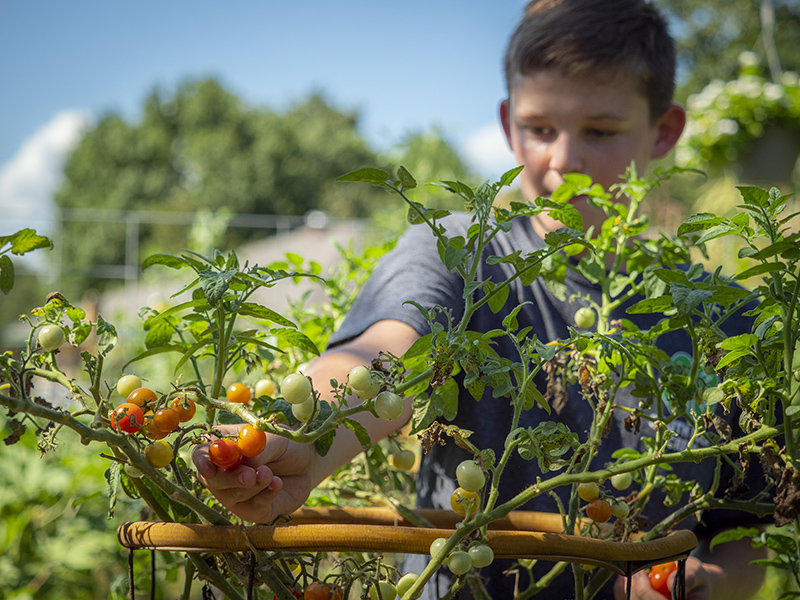Six Steps To A Successful Vegetable Garden
A thick slice of tomato, picked fresh from the vine, is a great addition to almost
any sandwich. Throw on a leaf or two of garden-fresh lettuce and you’ve got yourself
a winning combination.
But before you get to enjoy that wonderful taste sensation, there is some work that needs to be done in the garden to help ensure gardeners can grow the tastiest vegetables possible.
The first thing you need to do is choose the site, said David Hillock, Oklahoma State University Cooperative Extension consumer horticulturist.
“You may not have a lot of options in your landscape, but with a few soil modifications, you should be just fine,” Hillock said. “Choose a site that is well drained, gets full sunlight and is away from trees and large shrubs. If you’ve got smaller shrubs in your yard, these can be used for a windbreak. Just make sure they aren’t too tall to block the sun.”
As any gardener knows, water is one of the foundation blocks of successful gardening. Make sure the site you select is close to a water source.
Once you’ve got the site picked out, sit down and think about what you want to grow.
Be sure to consider the length of time from planting to harvest and group like crops together. Remember to plan appropriate spacing between rows so there will be plenty of room to access the plants for harvest. Some gardeners may want to consider putting in raised beds so plant access is easier.
“Once you’ve decided where to put your garden and what to plant in it, it’s time to prep your soil. It’s always good to add organic matter to your soil,” he said. “If you’ve got clay soil, add 3 to 4 inches of organic matter and incorporate it into the soil. Well-prepared soils will help your seeds germinate quicker, it’s easier to set your plants and it reduces the work of planting and caring for your crops.”
Gardeners may want to consider getting a soil test done to determine the nutrient content and pH. This will help you figure out what kind of fertilizer requirements you might have. Contact your local OSU Cooperative Extension office for assistance with soil testing.
Hillock said he knows gardeners can get a little anxious when spring gardening season rolls around, but stresses the importance of proper planting at the proper time.
“This is the fourth step in vegetable garden planning. Gardening can take a lot of work, so you don’t want to jeopardize your efforts by planting at the wrong time,” he said. “Proper spacing, plant depth and moisture all play key roles in successful gardening. If you’re setting transplants, make sure to handle them carefully, set them at the proper depth, use a starter solution and protect the plants from unexpected cold and wind.”
Water is a key element for successful gardening and is step number five in this six-step process. Oklahoma heat and high winds can quickly dry out your vegetable beds, so proper watering is essential. Apply 1 to 2 inches at each watering. It is a good idea to make use of mulches in an effort to make the watering process more efficient. Mulch helps keep the soil from drying out so quickly, as well as controls weeds and helps with erosion.
“Some things are beyond our control, but we do have an upper hand when it comes to controlling pests in the garden. The first thing gardeners should do while still in the planning process, is to select resistant varieties,” Hillock said. “It can be pretty discouraging to nurture along those blossoming zucchini plants, only later to discover they’re infected with squash bugs.”
He also suggests buying treated seeds or treat your own, as well as using a spray program.
Contact your local OSU Cooperative Extension office for more information, or visit HLA-6004 Oklahoma Garden Planning Guide.
A well-planned, properly managed garden can provide your family with an abundance of flavorful, high quality fresh vegetables from spring through fall.
“There’s nothing quite like the taste of fresh produce right off the vine or plant,” Hillock said. “The flavor of peak freshness makes the planning, watering, weeding and general care of the garden more than worth the effort.”
